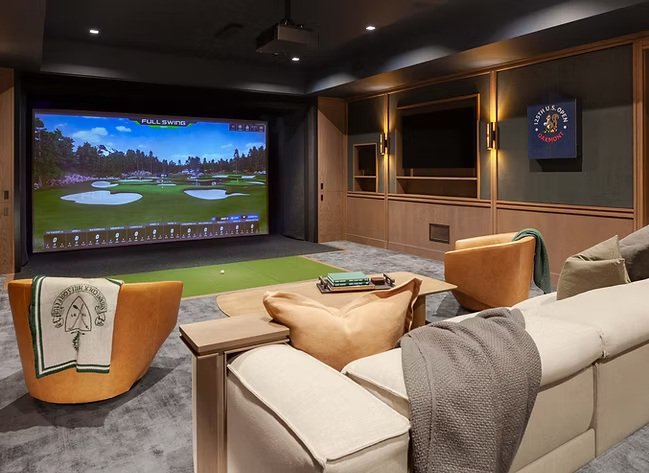
Boutique Interior Design: Personalized Luxury for Unique, Character-Driven Spaces
Boutique interior design has become one of the most sought-after approaches for homeowners and businesses who want spaces that truly stand out. Unlike mainstream design services that often rely on standardized layouts and mass-produced furniture, boutique design focuses on creating interiors that are deeply personal, thoughtfully curated, and rich with character. Every element is chosen with purpose, resulting in spaces that feel authentic, meaningful, and beautifully crafted.
What Makes Boutique Interior Design Different?
Boutique interior design is defined by its high level of customization, creativity, and attention to detail. Instead of designing for the masses, boutique designers work closely with a limited number of clients, giving each project the time, care, and craftsmanship it deserves.
From the first consultation to the final styling touches, the entire process is tailored to reflect the client’s lifestyle, personality, and vision. No two boutique-designed spaces are alike because each one tells a unique story—your story.
Key Principles of Boutique Interior Design
Several core principles set boutique interior design apart from traditional design approaches:
1. Tailored Concepts and Personal Expression
Boutique design begins with understanding the client’s identity. Designers dive into your tastes, routines, inspirations, and aspirations. The resulting concept is not trend-driven but rooted in your lifestyle. Whether you prefer modern minimalism, bohemian charm, or vintage flair, the design expresses who you are.
2. Curated and Custom-Made Pieces
Instead of relying solely on catalog items, boutique interiors often feature:
-
Bespoke furniture
-
Handcrafted décor
-
Artisan lighting
-
Custom cabinetry
-
Unique fabrics and finishes
These one-of-a-kind elements add depth, warmth, and lasting value, elevating even the simplest spaces into luxurious environments.
3. Intimate Attention to Detail
Every detail matters—textures, colors, finishes, proportions, lighting angles, and even the placement of accessories. Interior design for boutique obsess over harmony and balance, ensuring that each corner feels intentional and connected to the overall design theme.
4. High-Quality Materials and Craftsmanship
Boutique interiors often showcase premium materials such as natural stone, fine woods, organic textiles, and artisan-made ceramics. These materials don’t just look beautiful—they age gracefully and enhance the tactile quality of the space.
5. A Unique Visual Identity
Boutique design avoids mass-produced styling. Instead, it captures an aesthetic identity that is fresh, memorable, and exclusively yours. Every room becomes a curated experience, not just a decorated area.
Popular Boutique Design Styles
Boutique interior design is incredibly versatile and can align with any preferred aesthetic. Some of the most popular boutique styles include:
-
Modern Boutique: Clean lines, curated décor, and a minimalist yet luxurious feel.
-
Artisanal Chic: Handcrafted pieces, earthy palettes, organic shapes, and natural textures.
-
Vintage Boutique: Retro-inspired furniture, nostalgic décor, and warm, character-rich finishes.
-
Boho Boutique: A creative blend of patterns, global influences, layered textiles, and warm tones.
-
Glam Boutique: Metallic accents, plush fabrics, statement lighting, and sophisticated elegance.
A boutique interior designer often blends several styles to create a design that feels uniquely you.
The Boutique Interior Design Process
Unlike fast-paced design services, the boutique approach is thoughtful and collaborative. The process usually includes:
1. Discovery Consultation
Designers get to know your lifestyle, habits, likes, dislikes, and aspirations for the space.
2. Concept Creation
Mood boards, material samples, sketches, and layout ideas help shape the initial vision.
3. Customization and Material Selection
This stage involves choosing fabrics, finishes, furniture designs, lighting concepts, and unique décor elements.
4. Implementation and Project Oversight
Boutique designers typically oversee every installation detail to ensure craftsmanship meets expectations.
5. Styling and Final Touches
Art, accessories, plants, textures, and textiles are added to bring the space to life and complete the story.
Why Choose Boutique Interior Design?
Boutique interior design is ideal for clients who value authenticity and want spaces that reflect their identity—not just Pinterest trends. It offers:
-
A deeply personalized design experience
-
Unique, statement-making interiors
-
Access to bespoke furniture and artisan craftsmanship
-
A space that feels curated, intentional, and emotionally resonant
-
Long-lasting quality and distinctive style
Whether you’re designing a home, a boutique hotel, a retail space, or a stylish office, boutique interior design ensures that your space stands out and leaves a lasting impression.
Conclusion
Boutique interior design is more than just a design style—it’s an approach that blends creativity, craftsmanship, and personal expression. It transforms ordinary rooms into extraordinary spaces by focusing on custom details, high-quality materials, and the client’s unique identity. If you’re looking for interiors that feel luxurious, thoughtful, and truly yours, boutique design offers the perfect blend of artistry and individuality.


